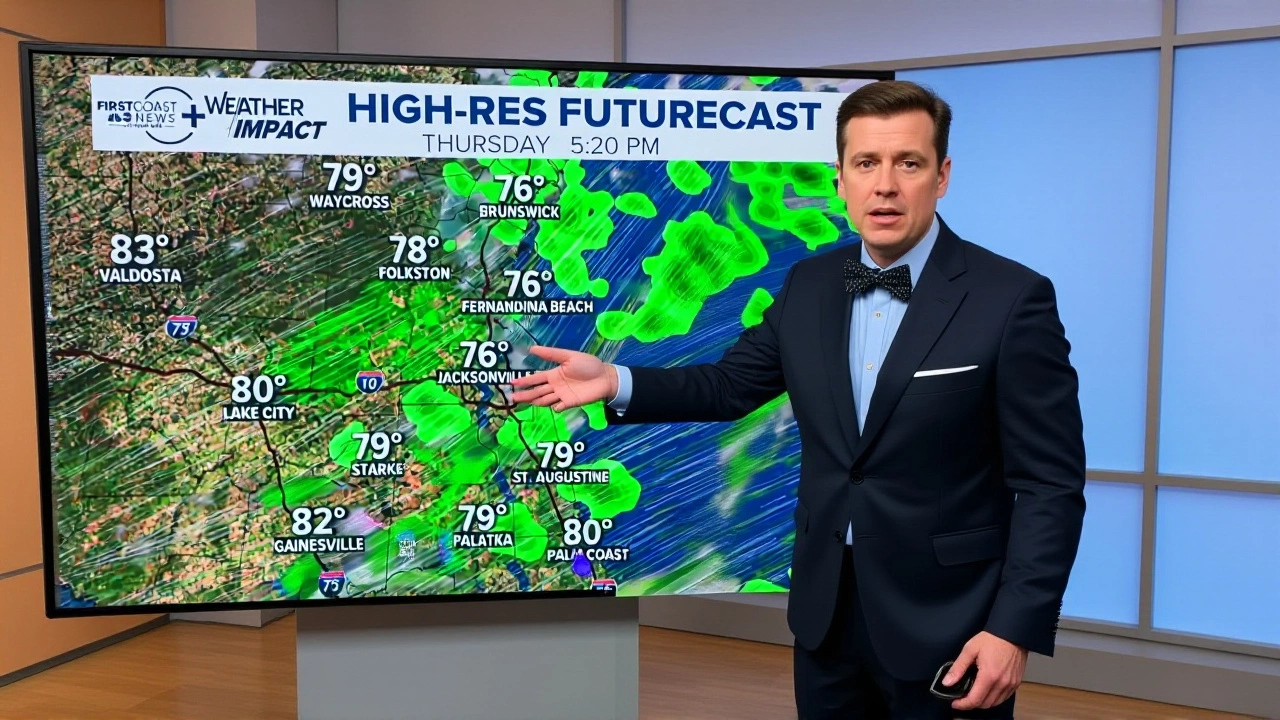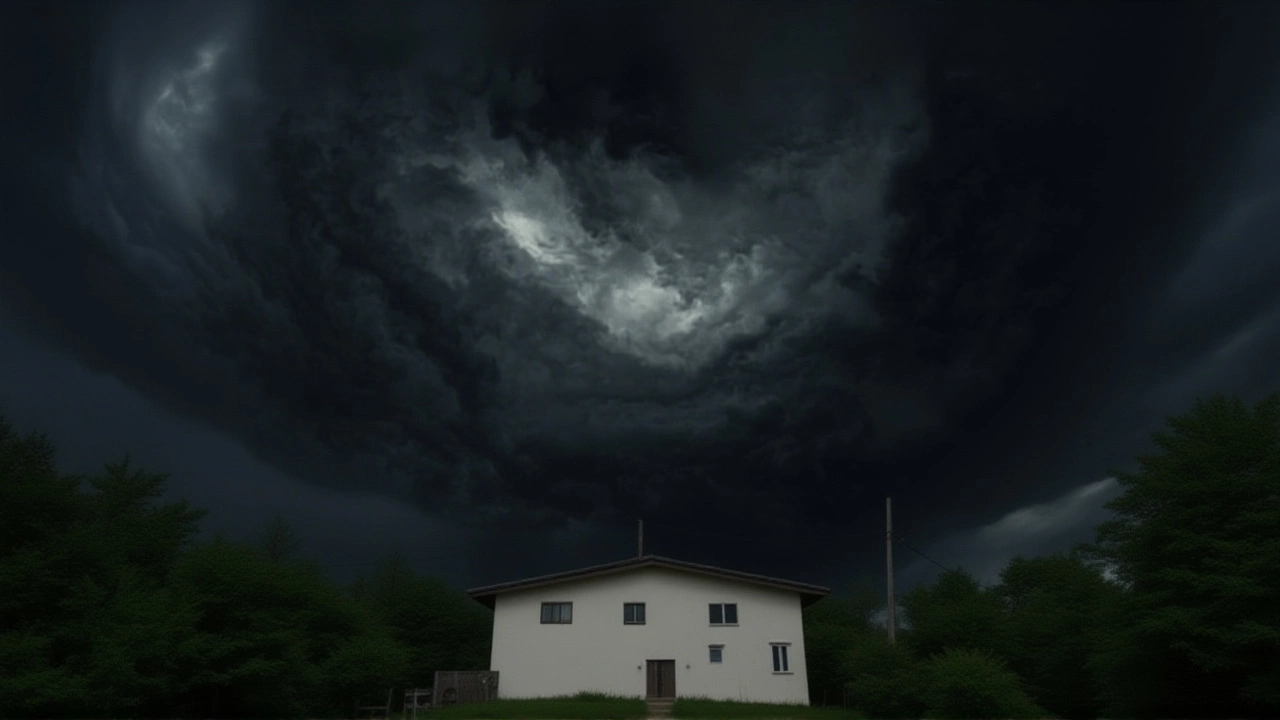- 0
When Bryan Norcross, FOX Weather Hurricane Specialist of FOX Weather warned residents on October 8, 2025, an early‑season nor'easter was poised to hit the U.S. East Coast, the alert sparked immediate concern across millions of households.
The storm, formally noted as early‑season nor'easterEast Coast, is expected to roll northward from the Southeast on Friday, October 10, 2025, and linger through Sunday, October 12, 2025. Forecast models from the National Weather Service (NWS) and private agencies point to heavy rain‑laden bands delivering up to 3‑4 inches of rain per hour in parts of the Carolinas, while sustained winds could top 45 mph with gusts exceeding 60 mph in the Mid‑Atlantic and New England.
Why "early‑season" matters
Most nor'easters blossom between November and March, when the jet stream dives far south and sea‑surface temperatures are still relatively cool. This one, however, is forming a week earlier than the climatological average, a pattern some researchers link to a lingering La Niña‑like pattern over the Pacific that nudges storm tracks farther south.
Dr. Elena Martinez, a climate dynamics professor at the University of Maryland, notes, "An early nor'easter can catch communities off‑guard because many preparedness campaigns don't kick off until November. The timing amplifies the risk of power outages and flash‑flooding, especially in older urban drainage systems."
Detailed forecast and expected impacts
According to the latest NWS mesoscale discussion, the system will draw moist air from the Gulf of Mexico, collide with a cold front off the Mid‑Atlantic, and intensify as it skirts the coastline. The following bullet points summarize the most critical hazards:
- Rainfall: 2‑3 inches across the Carolinas, with localized maxima of 5 inches in coastal South Carolina.
- Wind: Sustained 35‑45 mph, gusts up to 70 mph in parts of New Jersey and Massachusetts.
- Coastal flooding: Potential storm‑surge elevations of 2‑3 feet above mean sea level, threatening low‑lying neighborhoods from Wilmington to Boston.
- Power outages: Preliminary estimates from utility firms suggest 50,000–80,000 customers could lose electricity, especially in older grid sections of Baltimore and Providence.
FOX Weather’s mobile app, which offers push notifications for rain‑track, wind‑alert, and flood‑risk zones, has already seen a 23 % surge in downloads from the affected states since the forecast was released.
What local officials are doing
In Raleigh, North Carolina, Mayor Renee Baker declared a voluntary shelter‑in‑place advisory for the city’s River District, urging residents to stock up on water and non‑perishable food. Similar advisories are slated for Washington, D.C., and New York City, where the NWS has issued a coastal flood watch for portions of the Atlantic shoreline.
Maryland’s Emergency Management Agency (MEMA) is pre‑positioning sandbags near the Chesapeake Bay bridges and has activated its Incident Command System to coordinate utility crews and first‑responders.
Reaction from the private sector
Utility giant Dominion Energy announced that crews will be on standby to address downed lines, while the Amtrak Northeast Corridor is reviewing timetables to mitigate potential service disruptions.
Travel‑booking site Trip.com reported a 12 % rise in last‑minute cancellations for flights out of Orlando and Boston, citing “weather‑related concerns.”

Broader climate context
Although a single storm cannot be directly blamed on climate change, the increasing frequency of off‑season severe weather aligns with a warming Atlantic that holds more moisture. The U.S. Climate Assessment 2023 warned that “by 2050, the odds of experiencing a high‑impact coastal storm in the Northeast could rise by roughly 40 %.”
For everyday citizens, the lesson is simple: keep an eye on official forecasts, have a backup power source if possible, and heed any evacuation orders.
What’s next?
Forecasters will release updated model runs at 6 a.m. and 6 p.m. EST on Friday and Saturday. The NWS is expected to upgrade the coastal flood watch to a warning by late Saturday if the storm maintains its intensity.
Meanwhile, Watchers.news, the outlet that first flagged the system on October 8, continues to aggregate live radar feeds, offering a real‑time “storm‑tracker” sidebar on its homepage.
Frequently Asked Questions
How will the nor'easter affect commuters on the East Coast?
Heavy rain and strong gusts are likely to cause delays on major highways such as I‑95 and cause brief interruptions to commuter rail services in Washington, D.C., and New York. Drivers should allow extra travel time and monitor local traffic alerts via the FOX Weather app.
What regions are most at risk of coastal flooding?
Low‑lying neighborhoods along the Atlantic shoreline—from Wilmington, North Carolina, through the Mid‑Atlantic and up to Boston, Massachusetts—face the highest risk. Residents in these zones should review local flood‑watch maps and be prepared to move to higher ground if instructed.
Why is this storm considered “early‑season”?
Nor'easters typically peak between November and March when cold air masses dominate. This system is forming in early October, about a month earlier than the historical average, which can reduce the time communities have to prepare.
What steps can homeowners take to protect their property?
Secure loose outdoor items, clear gutters, and, if you live in a flood‑prone area, consider sandbags or flood panels. Keeping a portable charger and a supply of bottled water can also mitigate short‑term power outages.
When will the next official forecast update be released?
The National Weather Service issues routine updates at 6 a.m. and 6 p.m. EST. FOX Weather will push real‑time alerts to its app subscribers as soon as new data become available.

